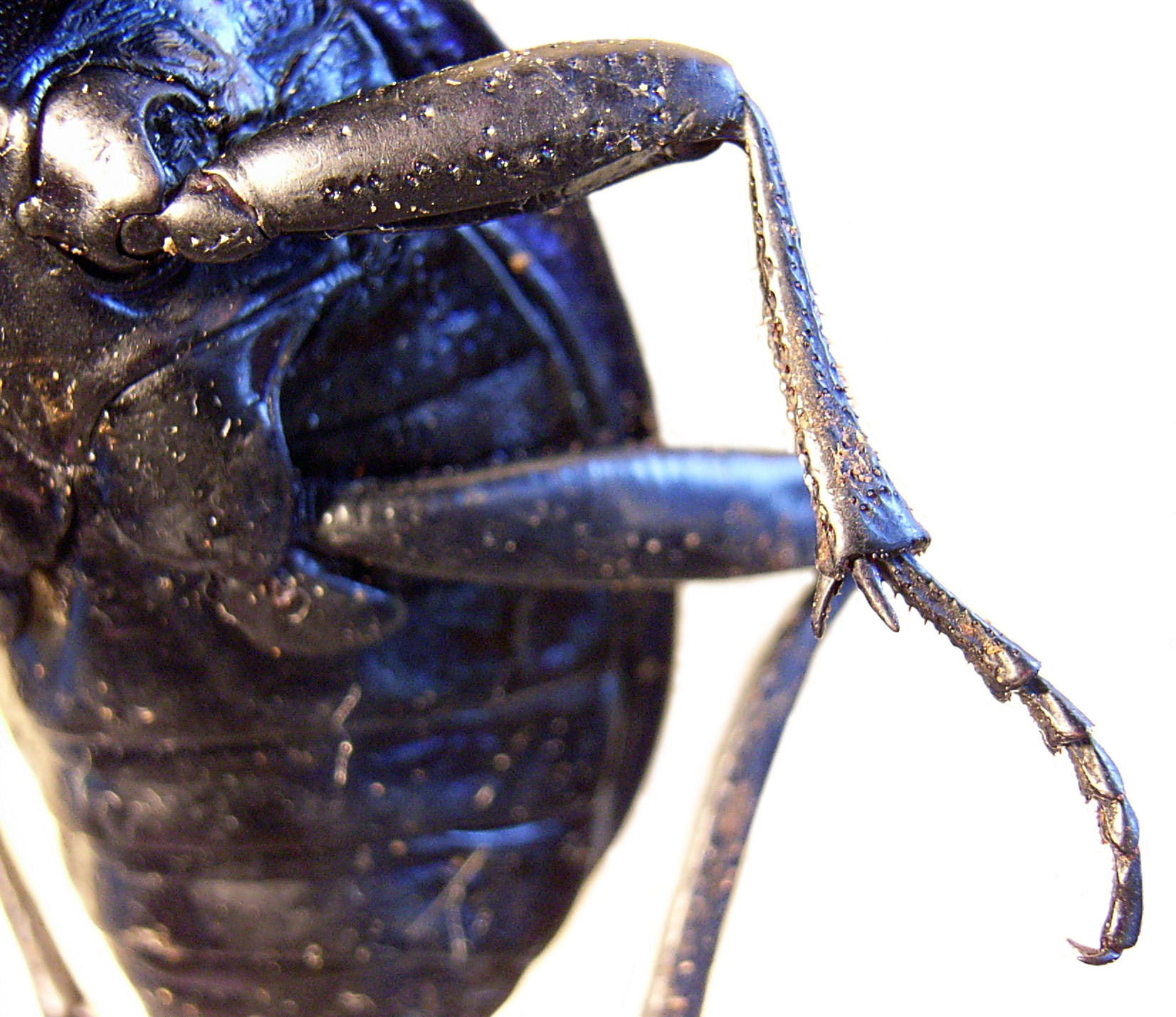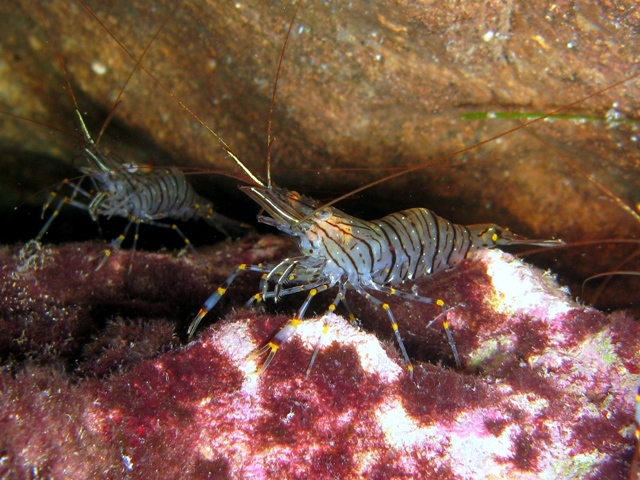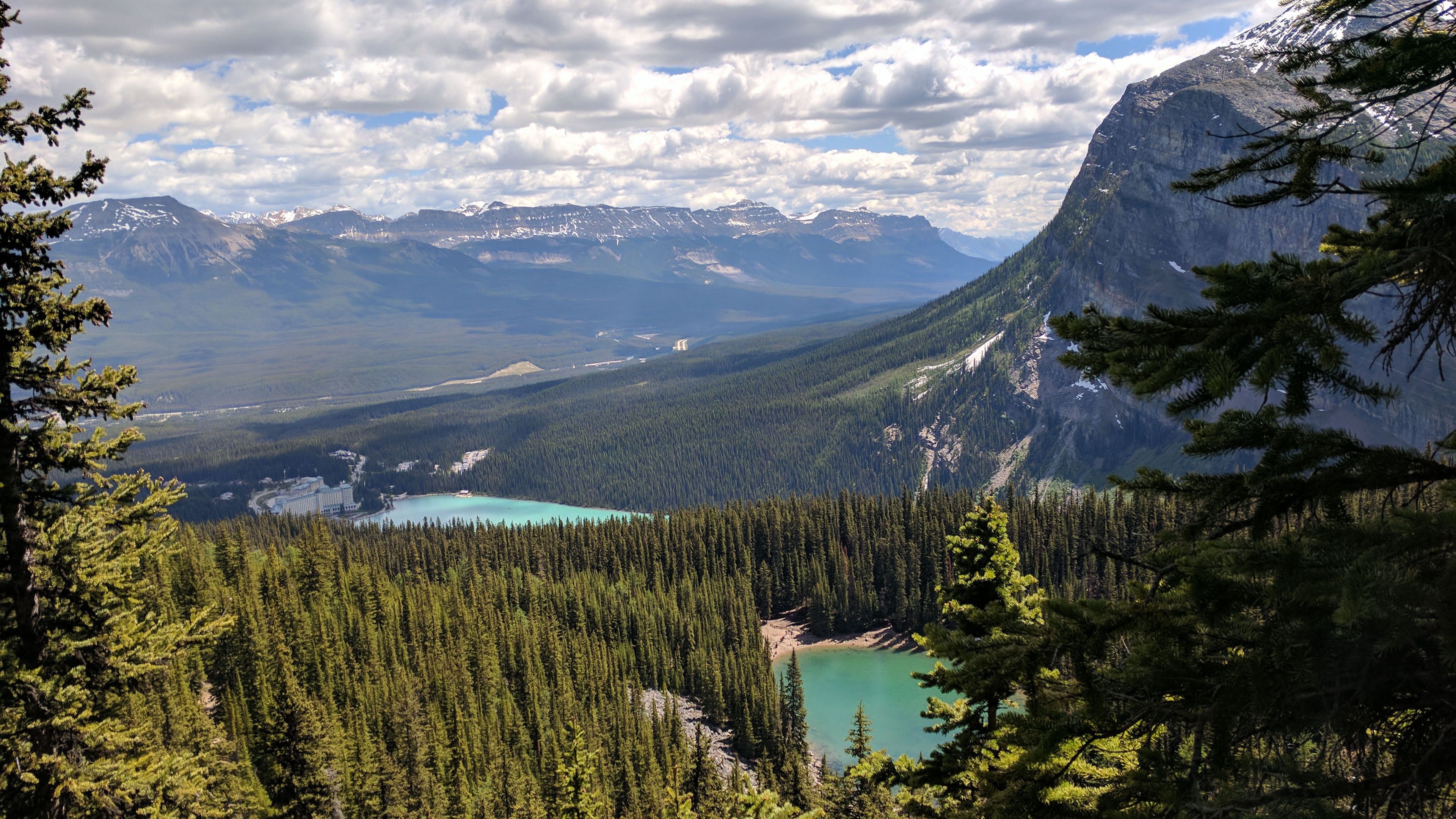|
Burgess Shale Fossils
The fossils of the Burgess Shale, like the Burgess Shale itself, are fossils that formed around 505 million years ago in the mid-Cambrian, Cambrian period. They were discovered in Canada in 1886, and Charles Doolittle Walcott collected over 65,000 specimens in a series of field trips up to the alpine site from 1909 to 1924. After a period of neglect from the 1930s to the early 1960s, new excavations and re-examinations of Walcott's collection continue to reveal new species, and statistical analysis suggests that additional discoveries will continue for the foreseeable future. Stephen Jay Gould's 1989 book ''Wonderful Life (book), Wonderful Life'' describes the history of discovery up to the early 1980s, although his analysis of the implications for evolution has been contested. The fossil beds are in a series of shale layers, averaging and totalling about in thickness. These layers were deposited against the face of a high undersea limestone cliff. All these features were ... [...More Info...] [...Related Items...] OR: [Wikipedia] [Google] [Baidu] |
Burgess Shale
The Burgess Shale is a fossil-bearing deposit exposed in the Canadian Rockies of British Columbia, Canada. It is famous for the exceptional preservation of the soft parts of its fossils. At old (middle Cambrian), it is one of the earliest fossil beds containing soft-part imprints. The rock unit is a black shale and crops out at a number of localities near the town of Field in Yoho National Park and the Kicking Horse Pass. Another outcrop is in Kootenay National Park 42 km to the south. History and significance The Burgess Shale was discovered by palaeontologist Charles Walcott on 30 August 1909, towards the end of the season's fieldwork. He returned in 1910 with his sons, daughter, and wife, establishing a quarry on the flanks of Fossil Ridge. The significance of soft-bodied preservation, and the range of organisms he recognised as new to science, led him to return to the quarry almost every year until 1924. At that point, aged 74, he had amassed over 65,000 s ... [...More Info...] [...Related Items...] OR: [Wikipedia] [Google] [Baidu] |
Charles Darwin
Charles Robert Darwin ( ; 12 February 1809 – 19 April 1882) was an English Natural history#Before 1900, naturalist, geologist, and biologist, widely known for his contributions to evolutionary biology. His proposition that all species of life have descended from a Common descent, common ancestor is now generally accepted and considered a fundamental scientific concept. In a joint presentation with Alfred Russel Wallace, he introduced his scientific theory that this Phylogenetics, branching pattern of evolution resulted from a process he called natural selection, in which the struggle for existence has a similar effect to the artificial selection involved in selective breeding.. Darwin has been described as one of the most influential figures in human history and was honoured by Burials and memorials in Westminster Abbey, burial in Westminster Abbey. Darwin's early interest in nature led him to neglect his medical education at the University of Edinburgh Medical Schoo ... [...More Info...] [...Related Items...] OR: [Wikipedia] [Google] [Baidu] |
Stephen Formation
The Stephen Formation is a geologic formation exposed in the Canadian Rockies of British Columbia and Alberta, on the western edge of the Western Canada Sedimentary Basin. It consists of shale, thin-bedded limestone, and siltstone that was deposited during Middle Cambrian time (513 to 497 million years ago). It is famous for the exceptional preservation of soft-bodied fossils: the Burgess Shale biota. The formation overlies the Cathedral escarpment, a submarine cliff; consequently it is divided into two quite separate parts, the 'thin' sequence deposited in the shallower waters atop the escarpment, and the 'thick' sequence deposited in the deeper waters beyond the cliff. Because the 'thick' Stephen Formation represents a distinct lithofacies, some authors suggest it warrants its own name, and dub it the Burgess Shale Formation. The stratigraphy of the Thin Stephen Formation has not been subject to extensive study, so except where explicitly mentioned this article applies main ... [...More Info...] [...Related Items...] OR: [Wikipedia] [Google] [Baidu] |
Mount Field (British Columbia)
Mount Field is a mountain located about northeast of the town of Field in Yoho National Park, Canada. The mountain was named in 1884 after Cyrus West Field, an American merchant who had laid the first Atlantic cable, 1858, a second in 1866; Mr. Field was visiting the Canadian Rockies the year as a guest of the CPR who were building the national railway, at the naming of a station and a mountain. Precipitation runoff from Mount Field drains into the Kicking Horse River. Topographic relief is significant as the summit rises 1,360 meters (4,462 feet) above the river in two kilometers (1.2 mile). The Trans-Canada Highway ( Highway 1) traverses the southern foot of the mountain. Geology Mount Field is composed of sedimentary rock laid down during the Precambrian to Jurassic periods. Formed in shallow seas, this sedimentary rock was pushed east and over the top of younger rock during the Laramide orogeny. The Burgess Shale is located below the ridge connecting Mt. ... [...More Info...] [...Related Items...] OR: [Wikipedia] [Google] [Baidu] |
Charles Doolittle Walcott (1850-1927), Sidney Stevens Walcott (1892-1977), And Helen Breese Walcott (1894-1965)
Charles Doolittle Walcott (March 31, 1850February 9, 1927) was an American paleontologist, administrator of the Smithsonian Institution from 1907 to 1927, and director of the United States Geological Survey. He is famous for his discovery in 1909 of well-preserved fossils, including some of the oldest soft-part imprints, in the Burgess Shale of British Columbia, Canada. Early life Charles Doolittle Walcott was born on March 31, 1850, in New York Mills, New York. His grandfather, Benjamin S. Walcott, moved from Rhode Island in 1822. His father, also Charles Doolittle Walcott, died when Charles Jr. was only two. Walcott was the youngest of four children. He was interested in nature from an early age, collecting minerals and bird eggs and, eventually, fossils. He attended various schools in the Utica area but left at the age of eighteen without completing high school, the end of his formal education. His interest in fossils solidified as he became a commercial fossil collector. ... [...More Info...] [...Related Items...] OR: [Wikipedia] [Google] [Baidu] |
Anomalocaris
''Anomalocaris'' (from Ancient Greek , meaning "unlike", and , meaning "shrimp", with the intended meaning "unlike other shrimp") is an extinct genus of radiodont, an order of early-diverging stem-group marine arthropods. It is best known from the type species ''A. canadensis,'' found in the Stephen Formation (particularly the Burgess Shale) of British Columbia, Canada. The other named species ''A. daleyae'' is known from the somewhat older Emu Bay Shale of Australia. Other unnamed ''Anomalocaris'' species are known from China and the United States. Like other radiodonts, ''Anomalocaris'' had swimming flaps running along its body, large compound eyes, and a single pair of segmented, frontal appendages, which in ''Anomalocaris'' were used to grasp prey. Estimated to reach long excluding the frontal appendages and tail fan, ''Anomalocaris'' is one of the largest animals of the Cambrian, and thought to be one of the earliest examples of an apex predator, though others have ... [...More Info...] [...Related Items...] OR: [Wikipedia] [Google] [Baidu] |
Appendage
An appendage (or outgrowth) is an external body part or natural prolongation that protrudes from an organism's body such as an arm or a leg. Protrusions from single-celled bacteria and archaea are known as cell-surface appendages or surface appendages. In many kinds of eukaryotic cells, the protrusions are known as membrane protrusions or cell appendages (examples include microvilli and cilia). Types in animals In arthropods, an appendage refers to any of the homologous body parts that may extend from a body segment, including antennae, mouthparts (including mandibles, maxillae and maxillipeds), gills, locomotor legs ( pereiopods for walking, and pleopods for swimming), sexual organs ( gonopods), and parts of the tail (uropods). Typically, each body segment carries one pair of appendages. An appendage which is modified to assist in feeding is known as a maxilliped or gnathopod. In annelids lateral protrusions from the body are called parapodia. In echinoderms ... [...More Info...] [...Related Items...] OR: [Wikipedia] [Google] [Baidu] |
Shrimp
A shrimp (: shrimp (American English, US) or shrimps (British English, UK)) is a crustacean with an elongated body and a primarily Aquatic locomotion, swimming mode of locomotion – typically Decapods belonging to the Caridea or Dendrobranchiata, although some Shrimp#Non-decapods, crustaceans outside of this order are also referred to as "shrimp". Any small crustacean may also be referred to as "shrimp", regardless of resemblance. More narrow definitions may be restricted to Caridea, to smaller species of either of the aforementioned groups, or only the Marine life, marine species. Under a broader definition, ''shrimp'' may be synonymous with prawn, covering stalk-eyed swimming crustaceans with long, narrow muscular tails (Abdomen#Arthropoda, abdomens), long whiskers (Antenna (biology), antennae), and slender, Biramous, biramous legs. They swim forward by paddling the swimmerets on the underside of their abdomens, although their escape response is typically repeated flicks wit ... [...More Info...] [...Related Items...] OR: [Wikipedia] [Google] [Baidu] |
Trilobite
Trilobites (; meaning "three-lobed entities") are extinction, extinct marine arthropods that form the class (biology), class Trilobita. One of the earliest groups of arthropods to appear in the fossil record, trilobites were among the most successful of all early animals, existing in oceans for almost 270million years, with over 22,000 species having been described. Because trilobites had wide diversity and an easily fossilized mineralised exoskeleton made of calcite, they left an extensive fossil record. The study of their fossils has facilitated important contributions to biostratigraphy, paleontology, evolution, evolutionary biology, and plate tectonics. Trilobites are placed within the clade Artiopoda, which includes many organisms that are morphologically similar to trilobites, but are largely unmineralised. The relationship of Artiopoda to other arthropods is uncertain. Trilobites evolved into many ecological niches; some moved over the seabed as predators, scavengers, or ... [...More Info...] [...Related Items...] OR: [Wikipedia] [Google] [Baidu] |
Canadian Rockies
The Canadian Rockies () or Canadian Rocky Mountains, comprising both the Alberta Rockies and the British Columbian Rockies, is the Canadian segment of the North American Rocky Mountains. It is the easternmost part of the Canadian Cordillera, which is the northern segment of the North American Cordillera, the expansive system of interconnected mountain ranges between the Interior Plains and the Pacific Coast that runs northwest–southeast from central Alaska to the Isthmus of Tehuantepec in Mexico. Canada officially defines the Rocky Mountains system as the mountain chains east of the Rocky Mountain Trench extending from the Liard River valley in northern British Columbia to the Albuquerque Basin in New Mexico, not including the Mackenzie, Richardson and British Mountains/ Brooks Range in Yukon and Alaska (which are all included as the "Arctic Rockies" in the United States' definition of the Rocky Mountains system). The Canadian Rockies, being the northern segment of ... [...More Info...] [...Related Items...] OR: [Wikipedia] [Google] [Baidu] |
Mount Stephen
Mount Stephen, , is a mountain located in the Kicking Horse River Valley of Yoho National Park, km east of Field, British Columbia, Field, British Columbia, Canada. The mountain was named in 1886 for George Stephen, 1st Baron Mount Stephen, George Stephen, the first president of the Canadian Pacific Railway. The mountain is mainly composed of shales and Dolomite (rock), dolomites from the Cambrian Period, some 550 million years ago. The Stephen Formation, a stratigraphical unit of the Western Canadian Sedimentary Basin was first described at the mountain and was named for it. Stephen has a subpeak known as Stephen SE1, at the end of a 1 km ridge, 132° from the main peak, visible from Lake O'Hara. Climbing The first ascent was made on September 9, 1887 by James. J. McArthur and his assistant T. Riley, which was made even more difficult by the surveying equipment they also carried with them. Unfortunately for them, smoke from forest fires limited visibility from the top. Begin ... [...More Info...] [...Related Items...] OR: [Wikipedia] [Google] [Baidu] |
Hallucigenia
''Hallucigenia'' is a genus of lobopodian known from Cambrian aged fossils in Burgess Shale-type deposits in Canada and China, and from isolated spines around the world. The generic name reflects the type species' unusual appearance and eccentric history of study; when it was erected as a genus, ''H. sparsa'' was reconstructed as an enigmatic animal upside down and back to front. Lobopodians are a grade of Paleozoic panarthropods from which the velvet worms, water bears, and arthropods arose. Description ''Hallucigenia'' is a long tubular animal with up to ten pairs of slender legs ( lobopods). The first 2 or 3 leg pairs are slender and featureless, while the remaining 7 or 8 pairs each terminate with 1 or 2 claws. Above the trunk region are 7 pairs of rigid conical sclerites (spines) corresponding to the 3rd–9th leg pairs. The trunk is either featureless (''H. sparsa'') or divided by heteronomous annulations (''H. fortis'' and ''H. hongmeia''). The "head" and "t ... [...More Info...] [...Related Items...] OR: [Wikipedia] [Google] [Baidu] |








